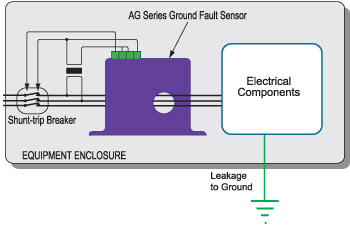Power Factor Correction Control
With ever increasing demands for electrical power the power generating 
Power Transformer Monitoring
Installing an NK Technologies’ Current Transducer over the conductors on the 
Most large power transformers utilize auxiliary cooling fans, drawing cooler air from a distance away from the transformer. NK Technologies’ Current Transducers or Current Operated Switches are used to monitor these fans for overload from bearing failure, under loads from drive component breakage or slippage, and to just be sure that the fan is energized and doing its required job.
Equipment Ground Fault Monitoring
As we become more aware of occupational health and safety so the need for 
Generator Installations
The need for back-up power for critical loads is becoming more and more 
Insulation Breakdown
Industrial electrical heaters are prone to ground leakage due to the breakdown or
